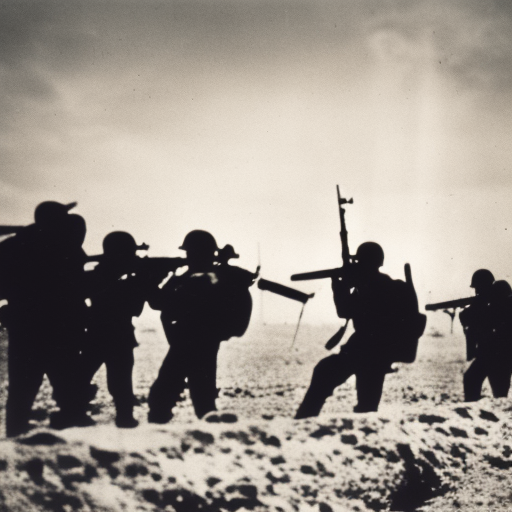Siege of Tobruk: A Key Battle in World War II
The Siege of Tobruk was a significant military campaign that took place during World War II in the North African desert. Lasting from April to December 1941, it involved the German and Italian forces attempting to capture the strategically important port city of Tobruk, which was held by the Allied forces.
Background:
Tobruk, located on the eastern coast of Libya, was a crucial port for the Allies in North Africa. It provided a vital supply route for British and Commonwealth forces, enabling them to sustain their operations against the Axis powers. Recognizing its importance, the Allies fortified Tobruk and established a garrison there.
The German Offensive:
In April 1941, the German Afrika Korps, led by General Erwin Rommel, launched an offensive against Tobruk. The German forces, supported by Italian troops, aimed to capture the city and cut off the Allied supply lines. The initial attack was swift and caught the Allies off guard, resulting in the German forces encircling Tobruk.
The Siege Begins:
With the city surrounded, the Siege of Tobruk began. The German and Italian forces established a perimeter around the city, cutting off all supply routes and launching regular attacks on the Allied defenses. Despite being outnumbered and outgunned, the Allied forces, primarily composed of Australian, British, and Indian troops, put up a determined resistance.
The Rats of Tobruk:
The defenders of Tobruk became known as the “Rats of Tobruk” due to their resilience and refusal to surrender. They endured harsh conditions, constant bombardment, and shortages of food, water, and ammunition. Despite these challenges, the Allied forces held their ground and launched counterattacks whenever possible.
The Relief of Tobruk:
The Allies recognized the importance of relieving Tobruk and launched several operations to break the siege. Operation Brevity and Operation Battleaxe were unsuccessful, but they served as valuable learning experiences for the Allies. Finally, in November 1941, Operation Crusader was launched, successfully breaking the siege and forcing the Axis forces to retreat.
Legacy:
The Siege of Tobruk was a turning point in the North African campaign. The successful defense of Tobruk boosted Allied morale and demonstrated the vulnerability of the Axis forces. It also provided valuable lessons in defensive warfare and highlighted the importance of logistics in modern warfare.
Conclusion:
The Siege of Tobruk was a significant event in World War II, showcasing the determination and resilience of the Allied forces. Despite being outnumbered and cut off from supplies, the defenders of Tobruk held their ground and ultimately broke the siege. The battle had a profound impact on the North African campaign and played a crucial role in the eventual defeat of the Axis powers in the region.












